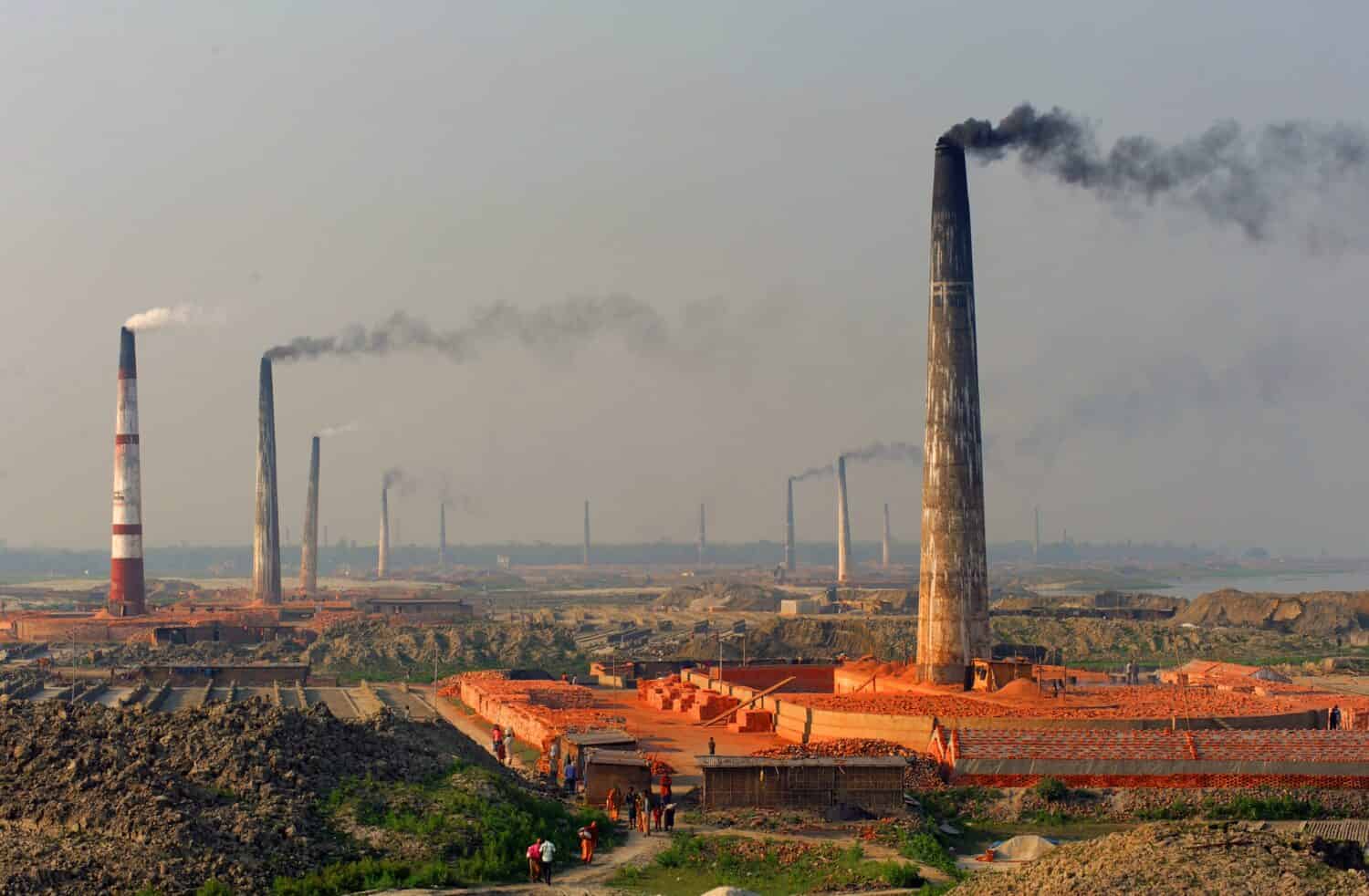Air pollution is a global issue of paramount concern, and it profoundly impacts public health, the environment, and overall quality of life. In Asia’s sprawling and diverse continent, several countries grapple with alarmingly high levels of air pollutants, presenting a complex and multifaceted challenge. Let’s delve into the top 10 countries in Asia with the highest air pollution levels, providing in-depth insights into the factors contributing to their poor air quality.
From the bustling streets of New Dehli to the industrial zones of China, the air quality in these countries is influenced by a unique combination of industrialization, energy sources, agricultural practices, and geographical factors. As we explore these nations, we’ll uncover the reasons behind their air pollution status, shedding light on the complexities and nuances of this critical issue.
Understanding the drivers of air pollution in these Asian countries is crucial for raising awareness and encouraging comprehensive and practical solutions. The battle against air pollution is a pressing one, and it demands collaborative efforts, both at home and on the international stage, to ensure cleaner, healthier air for everyone.
1. India
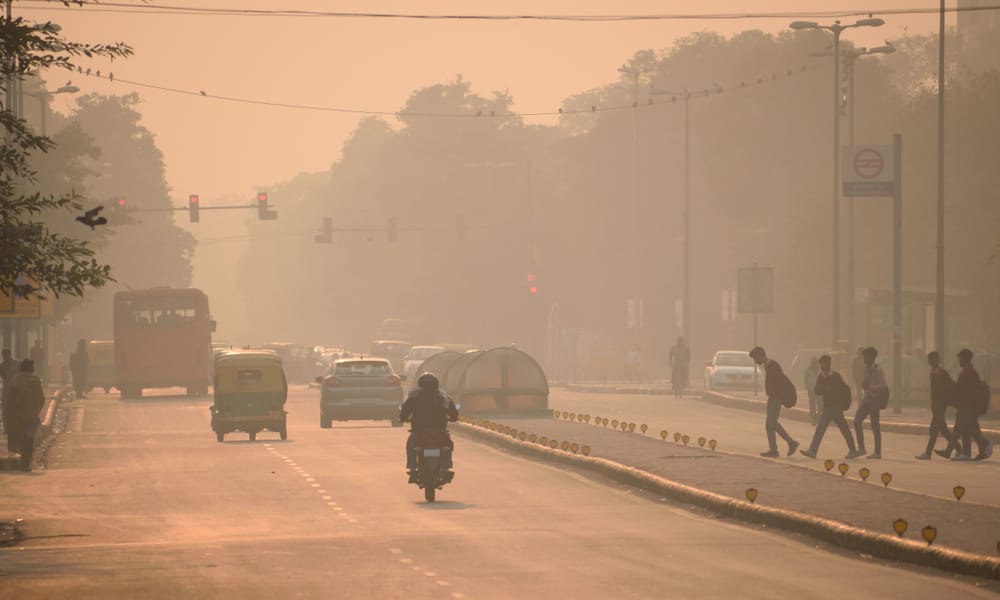
Daily life in India means venturing out in hazardous air quality.
©Saurav022/Shutterstock.com
India’s air quality woes are multifaceted and deeply rooted. The country grapples with rapid industrialization and urbanization, which have led to increased emissions from factories and a burgeoning fleet of vehicles. Moreover, India’s heavy reliance on coal for energy generation significantly contributes to air pollution. Burning agricultural residues, especially in the northern regions, creates a thick blanket of smog during winter. Additionally, geographical factors significantly worsen air quality, with cities like Dehli experiencing temperature inversions that trap pollutants near the ground. These factors, inadequate environmental regulations, and limited enforcement have made India one of the world’s most polluted countries.
2. Bangladesh

A massive increase in vehicle traffic and industrialization make Bangladesh a polluted location.
©Hafiz Johari/Shutterstock.com
Bangladesh, one of the most densely populated cities in the world, faces severe air pollution issues. Rapid urban growth and industrialization are the leading culprits, as they bring increased factory emissions and a surge in vehicular traffic. The widespread use of low-quality fuels for cooking and heating in households further exacerbates the problem. Natural factors, such as the country’s geographical location and climate conditions, also play a role. Locating near the Bay of Bengal makes Bangladesh susceptible to cyclones, contributing to high particulate matter levels. These factors, combined with inadequate infrastructure for waste management and limited regulatory enforcement, have resulted in poor air quality across the nation.
3. Pakistan
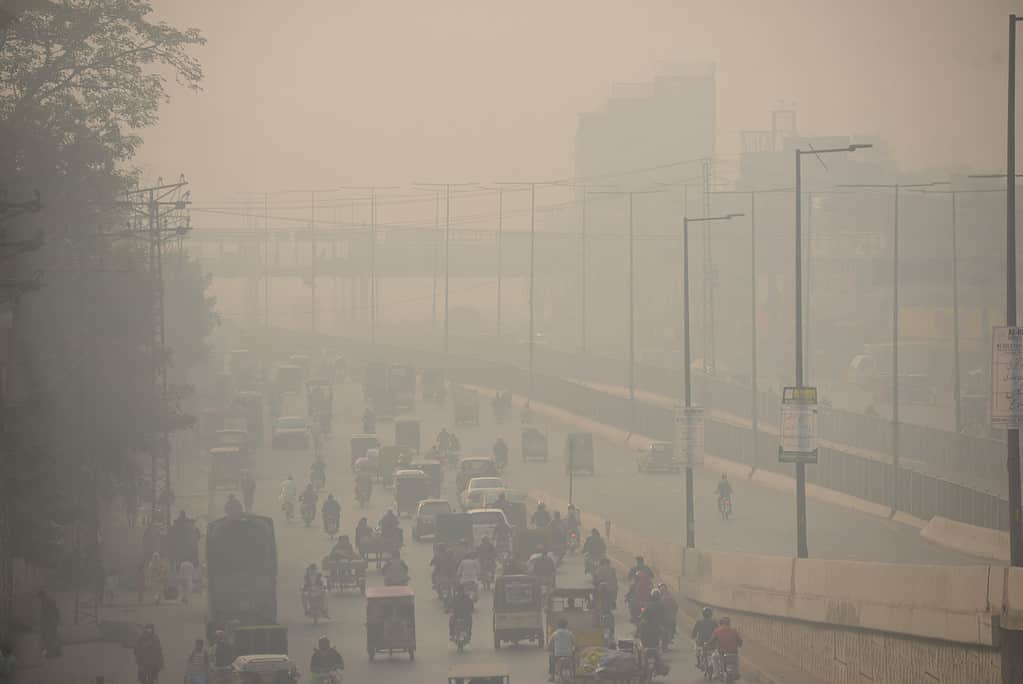
Lahore, Pakistan, is one of the unhealthiest places in the world.
©Murtaza.Ali/Shutterstock.com
Pakistan’s air quality problems stem from various sources, with industrial emissions and vehicular exhaust being prominent contributors. The reliance on low-quality fuels, particularly in older vehicles, further intensifies the issue. Dust storms and natural sources of particulate matter, often found in arid regions, add to the complexity of the problem. Limited regulatory policies and challenges in monitoring and mitigating pollution sources have made it difficult to curtail air pollution effectively in Pakistan. These factors, combined with the country’s rapidly increasing population, contribute to the high levels of pollution that Pakistan contends with. Additionally, Lahore is consistently listed as one of the most polluted cities in the world.
4. China

Relying on coal in an overpopulated country lends to severe air pollution.
©sevenke/Shutterstock.com
China still faces challenges while significantly combating air pollution due to its historical reliance on coal for energy. Industrial pollution is a significant concern, particularly in areas with heavy manufacturing. The rapid pace of urbanization and the resulting surge in vehicular traffic contribute to high pollution levels in many cities. Geographical factors play a role, with some regions experiencing temperature inversions and pollution-trapping meteorological conditions. Despite ongoing improvements, air quality remains a significant concern in certain parts of the country.
5. Iran
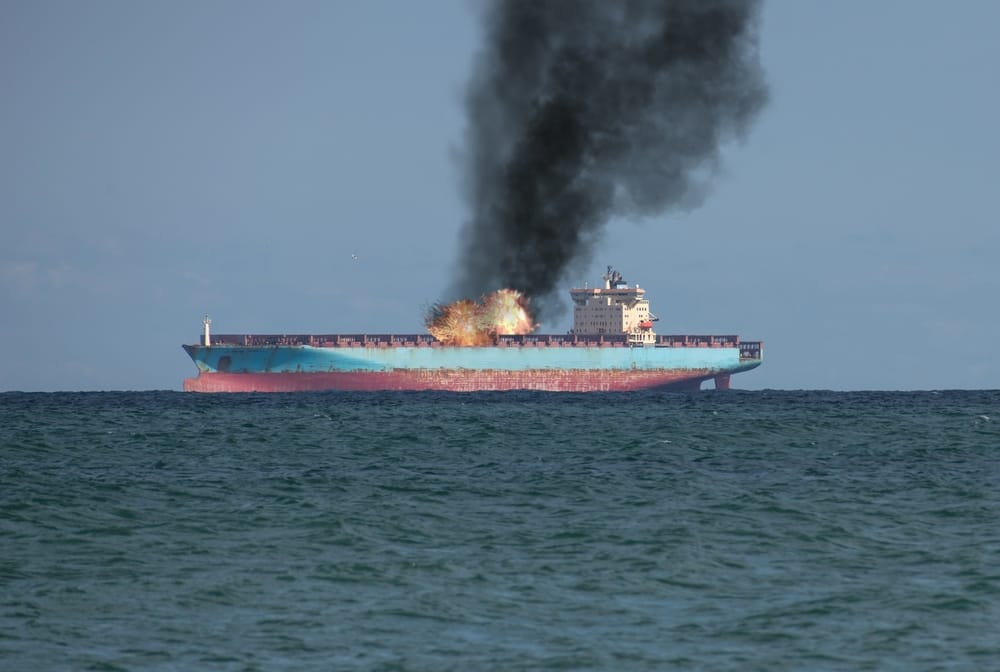
The oil production in Iran is minimally regulated.
©Bogdan Vacarciuc/Shutterstock.com
Iran’s air quality issues primarily stem from its high dependence on fossil fuels for energy. Industrial emissions from oil and gas production lead to air pollution. Geographical factors, including valleys that can trap pollutants, worsen the problem. The arid climate of Iran is prone to dust storms, which release particulate matter into the atmosphere. While Iran has taken steps to address its air pollution challenges, including implementing emissions standards, the country continues to grapple with this issue.
6. Nepal

Pollutants tend to become trapped in specific areas of Nepal.
©Jose_Carrillo/Shutterstock.com
Nepal faces air pollution problems that are driven by multiple factors. Deforestation and biomass burning for cooking and heating are prevalent, leading to high levels of particulate matter in the air. The country’s limited access to clean energy means that many households rely on solid fuels. Urbanization has led to increased vehicular emissions, especially in the Kathmandu Valley, surrounded by mountains and experiences temperature inversions that trap pollutants. Nepal’s geography, with its mountainous terrain, makes it susceptible to poor air quality, as pollution can become trapped in valleys and basins. These combined factors have contributed to Nepal’s air pollution crisis.
7. Iraq
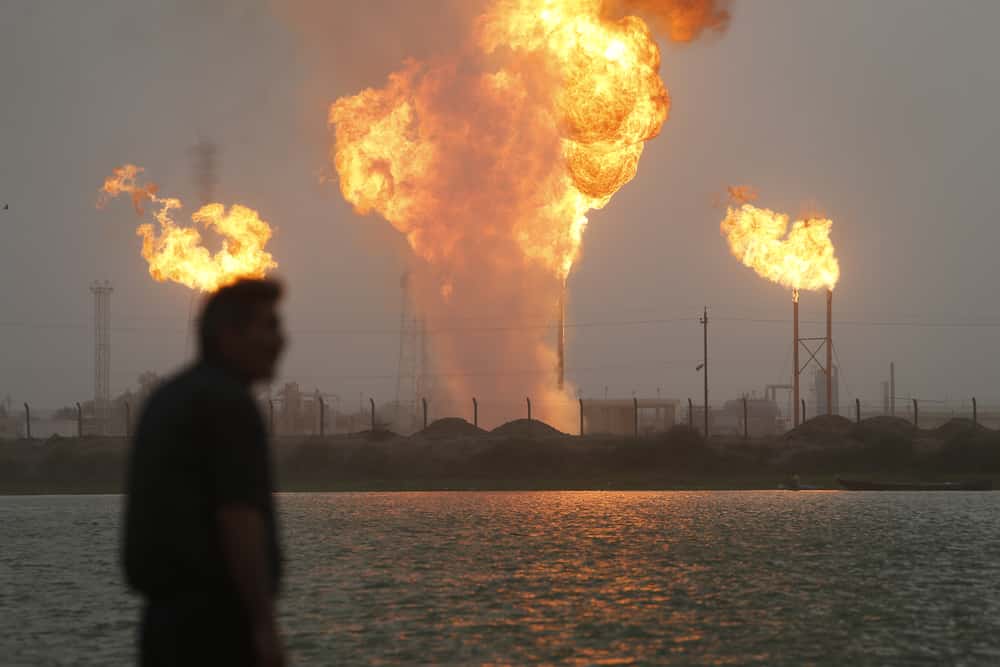
The lack of environmental regulations in Iraq contributes to its excess pollution.
©Essam al-Sudani/Shutterstock.com
Air quality in Iraq is significantly impacted by the flaring of natural gas in the oil industry, contributing to elevated levels of particulate matter and greenhouse gases. Dust storms from arid regions and the country’s hot climate exacerbate air pollution, forming smog. In urban areas, industrial emissions are a concern, but the impact of the oil and gas industry on air quality is especially pronounced. Limited environmental regulations and challenges in monitoring and mitigating pollution sources have hampered efforts to address the issue effectively.
8. Afghanistan
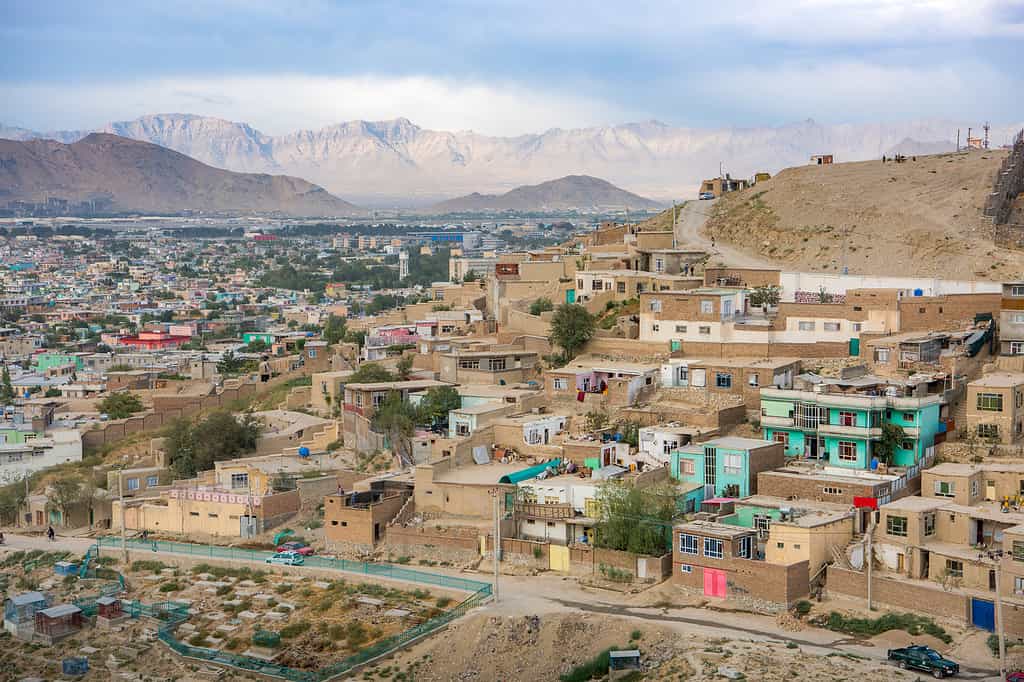
Afghanistan dust storms, damaged infrastructure, and security issues exacerbate pollution issues.
©mbrand85/iStock via Getty Images
Various factors, including the impact of conflict on infrastructure and urban development, influence Afghanistan’s air quality. Damage to infrastructure during the conflict has led to increased pollution, and limited access to clean energy sources has resulted in the widespread use of solid fuels for cooking and heating. Dust storms are common in arid regions, adding particulate matter to the air. In urban areas, growing vehicular traffic significantly contributes to air pollution. Ongoing security concerns and limited resources have hindered efforts to address air quality.
9. Mongolia
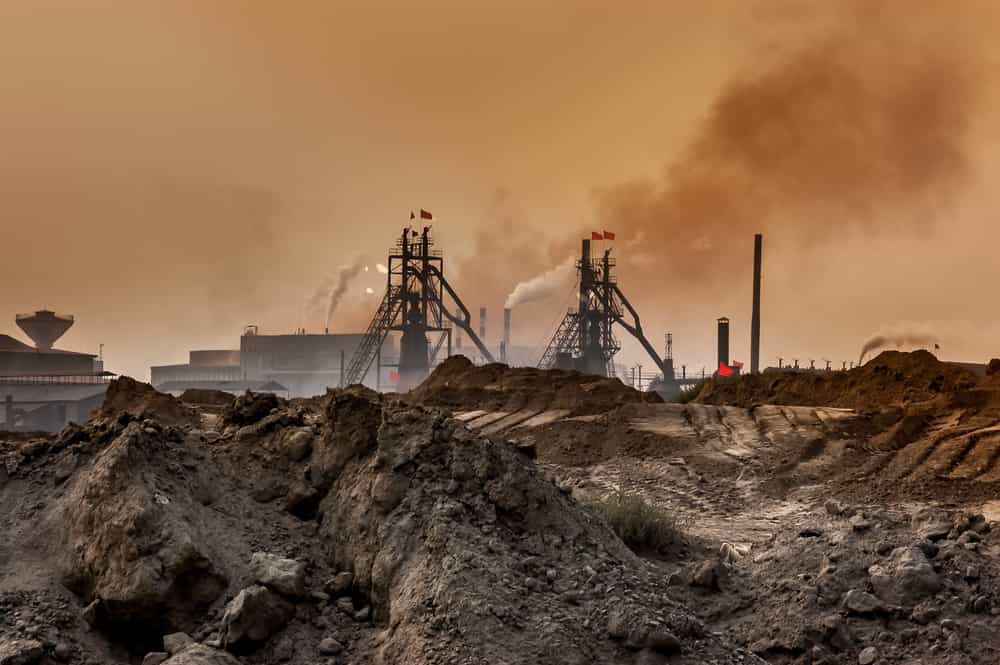
Coal is a significant factor in Mongolia’s air pollution problems.
©ebenart/Shutterstock.com
Mongolia faces a unique air pollution challenge due to its reliance on coal for heating, particularly during harsh winters. Household heating with low-quality coal significantly contributes to the problem, resulting in high levels of particulate matter. Dust storms from the country’s arid regions also contribute to air pollution. The rapid urbanization of the capital city, Ulan Bator, has increased vehicular emissions. Mongolia’s geography, surrounded by mountains, makes it susceptible to temperature inversions that trap pollutants, exacerbating the issue.
10. Indonesia

Parts of Indonesia are inundated with trapped air pollution.
©CatwalkPhotos/Shutterstock.com
Indonesia contends with air pollution challenges, primarily stemming from deforestation and peatland fires. Burning forests releases large amounts of particulate matter and greenhouse gases into the atmosphere. Vehicular emissions and industrial pollution further contribute to the problem. Indonesia’s proximity to volcanic activity means volcanic ash can increase the air pollution burden. Weather patterns, such as haze formation due to transboundary pollution, can also trap pollutants in certain regions. The vast and diverse archipelago complicates efforts to combat air pollution in Indonesia, making consistent enforcement and regulation challenging.
Looking to the Future

Many organizations and individuals are working to address the severe pollution issues in these ten countries.
©Media Lens King/Shutterstock.com
Air pollution is a critical concern affecting the health and well-being of millions in Asia. While diverse in many aspects, the top 10 countries here share a common struggle in battling dangerously high levels of air pollutants. While specific factors driving air pollution vary from one country to another, some recurring themes emerge.
Rapid industrialization and urbanization, reliance on fossil fuels, agricultural practices like crop burning, and geographical factors often combine to create the perfect storm of poor air quality. The consequences of this pollution are dire, including adverse health effects, economic costs, and environmental degradation.
Despite the challenges, it’s important to note that these countries are actively working to address their air pollution problems. Governments are implementing policies and regulations, promoting cleaner energy sources, and investing in technologies to reduce emissions. International cooperation also plays a significant role, as air pollution has no borders.
Ultimately, tackling air pollution in Asia requires a multifaceted approach involving governments, industries, communities, and individuals. Progress may be gradual, but the pursuit of cleaner air is worthy, as it promises improved health and quality of life for millions across the continent. By addressing the root causes of air pollution and implementing practical solutions, these countries can work towards breathing cleaner air and securing a sustainable future for future generations.
Thank you for reading! Have some feedback for us? Contact the AZ Animals editorial team.

